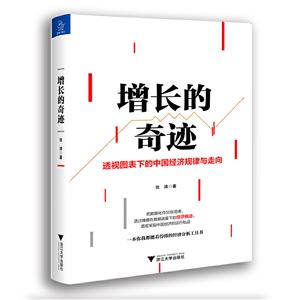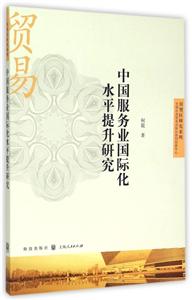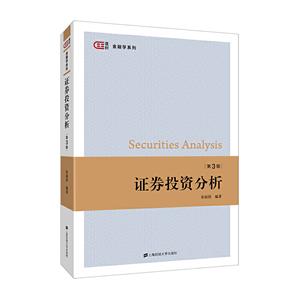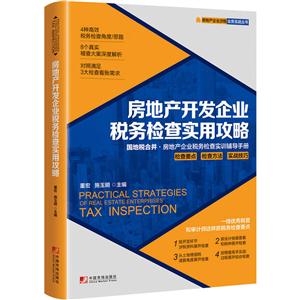微观经济学(双语教材/经济)

|
微观经济学(双语教材/经济)作者:李彬 开 本:大16开 书号ISBN:9787300120041 定价:49.0 出版时间:2010-06-01 出版社:中国人民大学出版社 |
微观经济学(双语教材/经济) 内容简介
本书是安德鲁·斯科特教授《微观经济学》的缩减版。不同于传统教科书的论述逻辑,本书将微观经济学作为理解社会经济制度多样性和演化过程的工具。这使得这本中级水平的微观经济学教科书以一以贯之的个体决策模型统一了传统微观经济学的各个理论部分,并解释了复杂经济制度演化的内在机制。
本书的其他特色在于引用更多的实验证据和批判性的分析。本书语言生动、理论深入浅出,适合经济管理类本科生、研究生使用,对于经济学者和实际经济领域的决策者同样大有裨益。
微观经济学(双语教材/经济) 目录
前言**篇 导言
第1章 经济学与制度:重心的转移
第二篇 偏好、效用、需求以及不确定性
第2章 消费者及其偏好
第3章 效用一无差异曲线
第4章 市场中的需求和决策
第5章 消费者需求的应用与福利分析
第6章 不确定性与保险的出现
第三篇 生产与成本
第7章 生产和生产技术的发现
第8章 成本与选择
第9章 成本曲线
第四篇 决策理论
第10章 博弈论与策略经济分析工具
第五篇 市场和市场结构
第11章 完全竞争市场:短期分析
第12章 长期下的竞争性市场
第13章 企业家的时代:垄断
第14章 自然垄断与管制的经济学
第15章 寡头的世界——成功进入的肇始
第16章 市场进入与完全竞争的出现
第六篇 福利、交换与一般均衡
第17章 交换问题
第18章 一般均衡、自由市场与干预主义思想的起源
第七篇 市场失灵
第19章 道德风险和逆向选择:信息市场失灵
第20章 外部性:自由市场—干预主义的战斗在继续
第21章 公共物品、策略性投票的后果以及政府的作用
第八篇 要素市场与阶级斗争的起源
第22章 要素市场与阶级矛盾的起源
术语表
微观经济学(双语教材/经济) 节选
《微观经济学》是安德鲁·斯科特教授《微观经济学》的缩减版。不同于传统教科书的论述逻辑,《微观经济学》将微观经济学作为理解社会经济制度多样性和演化过程的工具。这使得这本中级水平的微观经济学教科书以一以贯之的个体决策模型统一了传统微观经济学的各个理论部分,并解释了复杂经济制度演化的内在机制。《微观经济学》的其他特色在于引用更多的实验证据和批判性的分析。《微观经济学》语言生动、理论深入浅出,适合经济管理类本科生、研究生使用,对于经济学者和实际经济领域的决策者同样大有裨益。
微观经济学(双语教材/经济) 相关资料
插图:The answer is yes, but only if his or her choices satisfy some consistency criteria. So, instead of insisting that preferences be constrained to satisfy certain axiomsor assumptions and then demonstrating that rational choices result, in this section of our analysis we insist on choice being constrained to be consistent in some manner and then go back and ask what the underlying preferences look like that areconsistent with these choices. This is called the reveal preference theory because the object of analysis is to ask what the choices of the consumer reveal about his or her preferences. Let us start with a simple concept. Say we observe a consumer in two situations described by how much income he has and what prices he faces. For example, say that in situation 1, he has $100 and can buy apples and pears each at $1 a piece. In that situation, say he buys 50 apples and 50 pears, which constitute bundle x (50 apples, 50 pears). (Note that the consumer can exactly afford this bundle because it exactly exhausts his income.) Now say that the consumer faces another situation in which he has $200 to spend but the price of apples has risen to $4 while the price of pears has stayed at $1 each. Say the consumer now buys 35 apples and 60 pears, bundley (35 apples, 60 pears), the cost of which is exactly $200. Such a consumer, we will claim, acted in a strange manner because notice that after the prices changed, he chose bundley = (35 apples, 60 pears), which he could have afforded in the first situation but chose not to take. If he did not like that bundle in the first situation (and chose x = (50 apples, 50 pears), then why the sudden reversal? The problem is that by choosing x = (50 apples, 50 pears) overy = (35 apples, 60 pears) in the first situation when both were affordable (at prices of $1 each), he revealed a direct preference for x over y; but in the new situation when his income and the prices changed, her evealed a preference for the opposite bundle. We would like to rule such reversalsout. This is done by the Weak Axiom of Revealed Preference.
经济 经济学理论 微观经济学
在线阅读
- 最新内容
- 相关内容
- 网友推荐
- 图文推荐
| [高考] 2022 西安电子科技大学《软件工程》大作业答案 (2022-04-25) |
| [家长教育] 孩子为什么会和父母感情疏离? (2019-07-14) |
| [教师分享] 给远方姐姐的一封信 (2018-11-07) |
| [教师分享] 伸缩门 (2018-11-07) |
| [教师分享] 回家乡 (2018-11-07) |
| [教师分享] 是风味也是人间 (2018-11-07) |
| [教师分享] 一句格言的启示 (2018-11-07) |
| [教师分享] 无规矩不成方圆 (2018-11-07) |
| [教师分享] 第十届全国教育名家论坛有感(二) (2018-11-07) |
| [教师分享] 贪玩的小狗 (2018-11-07) |






